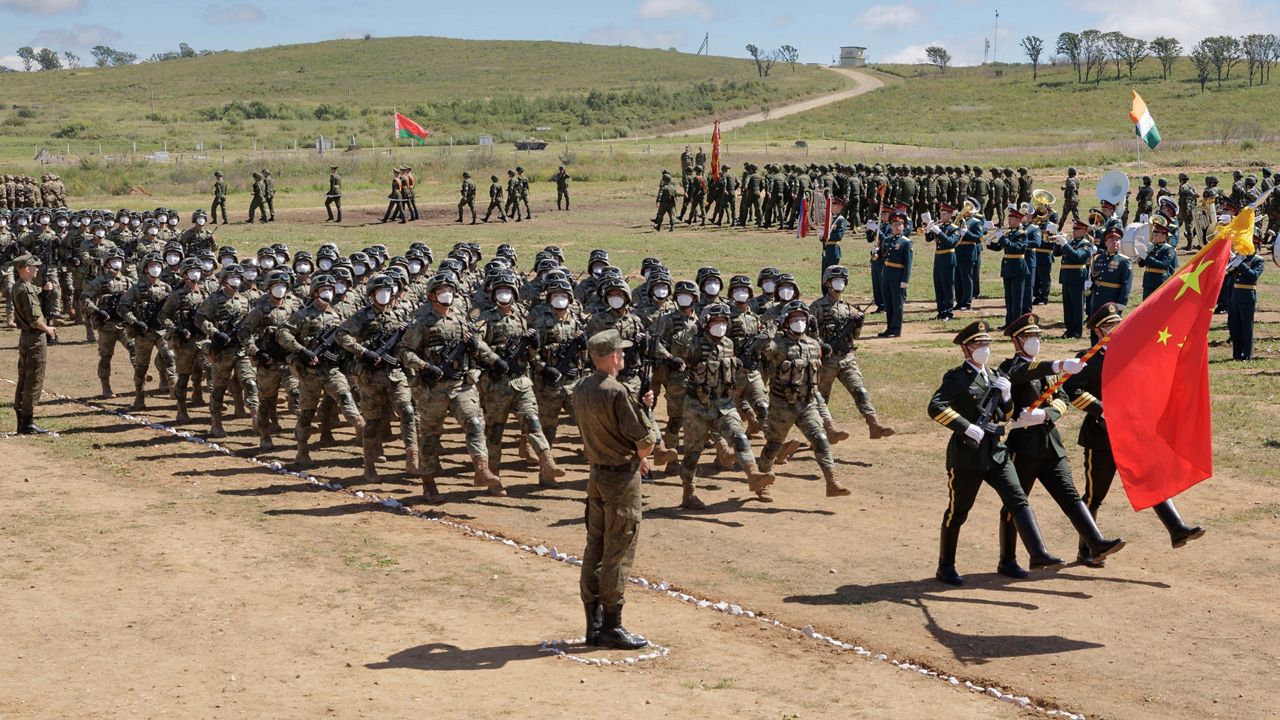Defense Secretary Lloyd Austin unveiled the United States’ National Defense Strategy in a briefing on Thursday, stressing that Russia and China pose the greatest international threats to the country’s interests – and warning that as the two countries continue to grow as partners, they “now pose more dangerous challenges to safety and security at home, even as terrorist threats persist.”
“The [People’s Republic of China] is the only competitor out there with both the intent to reshape the international order, and increasingly the power to do so,” Austin told reporters on Thursday. “My team and I have been laser-focused on this issue since day one.”
“At the same time, the NDS bluntly describes Russia as an acute threat – and we chose the word acute carefully,” Austin later added. “Unlike China, Russia can’t systemically challenge the United States over the long term. But Russian aggression does pose an immediate and sharp threat to our interests and values.”
While the document released Thursday says that conflict with China "is neither inevitable nor desirable,” it describes an effort to prevent Beijing's “dominance of key regions” — a clear reference to its aggressive military buildup in the South China Sea and increased pressure on the self-governing island of Taiwan. It warns that China is working to undermine American alliances in the Indo-Pacific and use its growing military to coerce and threaten neighbors.
The previous strategy, released in 2018 under then-President Donald Trump, reflected the fundamental shift from a U.S. military focused on countering extremists to one that must prepare for war with a major power.
The 2022 defense strategy increases the focus on allies as a key element of U.S. defense, underscoring the broader Biden administration effort to repair relations with partner nations that were splintered by Trump. At the center of the new document is the concept of “integrated deterrence,” which means the U.S. will use a broad combination of military might, economic and diplomatic pressures, and strong alliances — including America's nuclear arsenal — to dissuade an enemy from attacking.
It concludes that China remains “the most consequential strategic competitor for the coming decades," while Russia remains an “acute” threat.
The 80-page, unclassified report notes Russia's war in Ukraine and says Moscow is a serious threat to the U.S. and its allies, with nuclear weapons, cyber operations and long-range missiles.
But Russian President Vladimir Putin on Thursday denied having any intentions of using nuclear weapons in Ukraine, rather describing the conflict there as part of alleged efforts by the West to secure its global domination, which he insisted are doomed to fail.
Speaking at a conference of international foreign policy experts, Putin said it’s pointless for Russia to strike Ukraine with nuclear weapons.
“We see no need for that,” Putin said. “There is no point in that, neither political, nor military.”
Putin, who sent his troops into Ukraine on Feb. 24, has cast Western support for Ukraine as part of broad efforts by Washington and its allies to enforce its will upon others through what they call a rules-based world order. He argued that the world has reached a turning point, when “the West is no longer able to dictate its will to the humankind but still tries to do it, and the majority of nations no longer want to tolerate it.”
The Russian leader repeated Moscow’s unfounded claim that Ukraine was plotting to detonate a radioactive dirty bomb to blame Russia in a false flag attack, the allegations rejected by Ukraine and dismissed by its Western allies as “transparently false.”
Austin on Thursday further rebuffed those allegations, saying the Pentagon has “not seen anything to indicate that Putin has made a decision to use a dirty bomb, nor have we seen any indications that the Ukrainians are planning such a thing.
“In fact, [Ukrainian] leadership [has] indicated to us that's not in their plans,” Austin said, adding: “It's important to make sure that we're talking to adversaries and allies alike and making sure that we're tamping down dangerous talk.”
Thursday’s release is the first strategy since the U.S. ended its 20-year war in Afghanistan and withdrew all troops last year. The U.S. still has a small number of troops in Iraq and nearly 1,000 in Syria, but has largely shifted from the counterterrorism operations that dominated the last two decades to focus on threats from major competitors such as China.
The new review calls for increased research and development on cutting-edge technologies, including hypersonics, cyber, artificial intelligence and directed energy. And in a nod to recent recruiting challenges, it says the Pentagon must change its culture to attract a skilled force.
The Pentagon also released an accompanying nuclear posture review, which underscores the growing risks of nuclear danger, particularly as the relationship between China and Russia grows. It says the U.S. is committed to modernizing its nuclear forces while also looking at current nuclear capabilities that may no longer be needed for deterrence.
The nuclear review confirms the cancellation of the sea-launched cruise missile program, calling it not necessary. The program was included in the 2018 Trump administration's posture review, but the Biden budget early this year signaled its end by eliminating its funding.
This is the first time the Pentagon's three strategy documents — the national defense review, and those governing missile defense and nuclear posture — were developed and released at the same time.
The defense strategy review is required by Congress every four years; lawmakers have already received a longer classified version.



